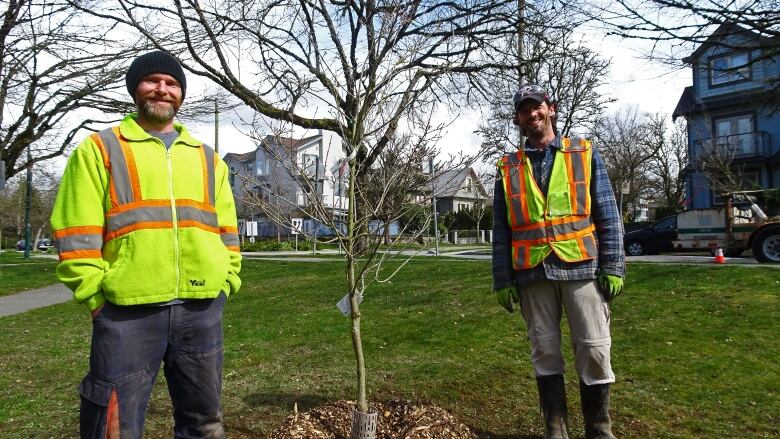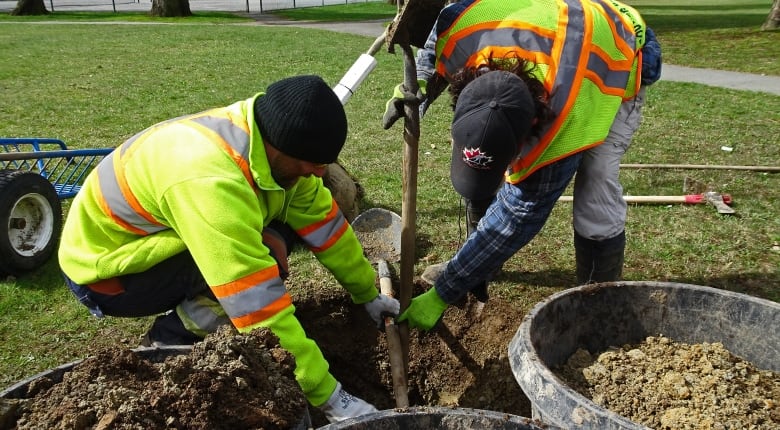Green side up: planting Vancouver's canopy, one tree at a time
Park Board crews spend 6 months every year planting thousands of trees along streets, in parks

Dig a hole.Drop in a tree.Fill with dirt.Water and repeat.
That's been the past seven months of effort forVancouver Park Board workers Michael Robinson and TimWitheridge.
The pair are one of several crews whose job it is to plant trees along streets and in parks to help increase their number across the city.

"Thousands...thousands," said Robinson, an apprentice arboristwith the Park Board, when asked how many he has planted between October 2017 and April 2018.
"It's not easy. You've got to have a strong back."
The City of Vancouver is aiming to plant 150,000 new trees across Vancouver in a 10-year span, from 2010 to 2020, as part of its Urban Forest Strategy.

A main goal is to increase the city's canopy ground area covered by tree leaves as seen from the air from 18 per cent to 22 per cent.
Vancouver had 22-per-cent canopy cover in in 1995, but a combination of development, pests and even property owners bent on improving their views by cutting down mature trees, caused that figure to decline.

According to foresters likethe Park Board's Bill Stephen, urban forests clean the air, slow climate change, easestrong winds, conserve rainwater, provide wildlife habitat and contribute to a sense of wellbeing for city residents.
"There are a lot of amenities that trees can provide in a city... in my mind, making Vancouver the beautiful place that it is," he said.

Stephen says that by the end of 2017, more than 102,000 trees have been planted so a final push of close to 50,000 will be needed before 2020.
"We started off a little bit more slowly because we weren't accustomed to planting as many trees as that," he said. "But we're definitely in full swing now."

Trees are plantedduring the fall and winter when most are not actively growing because they have a better chance to settle in before the spring and summer.
For larger trees, Robinson and Witheridgetry to plant between eight and 10 each shift,but that can be slowed by bad weather or even hard soil, which is hard to dig through.
Each tree planted in this way costs the park board an average of $500.

Robinson saysall the effort is worth it.
"You're planting trees, you're giving back to the community and it's sort of spreading the beauty of Vancouver when you see the cherry blossoms that come out ... you contributed to something special."

The plantersalso face obstacles, such as soil space where pipes and utility lines need to run;enough water to get established, especially as summers in Vancouver become drier due to climate change;and even residents who fear the new trees will mean more work for them.

Robinson says the tree is more important than the extra leafraking they require.
"The oxygen that the tree gives you and the beauty of having a tree in front of your house far outweighs your week of having to rake leaves," he said.
Watch MichaelRobinson explain the importance of water for newly planted trees and how residents can help:
Stephen says up to 1,500 street or park trees either die or need to be removed each year either due to disease, age or some other problem. But they are being replaced.
"We're adding to the inventory as we go," he said.














_(720p).jpg)


 OFFICIAL HD MUSIC VIDEO.jpg)
.jpg)



























































































